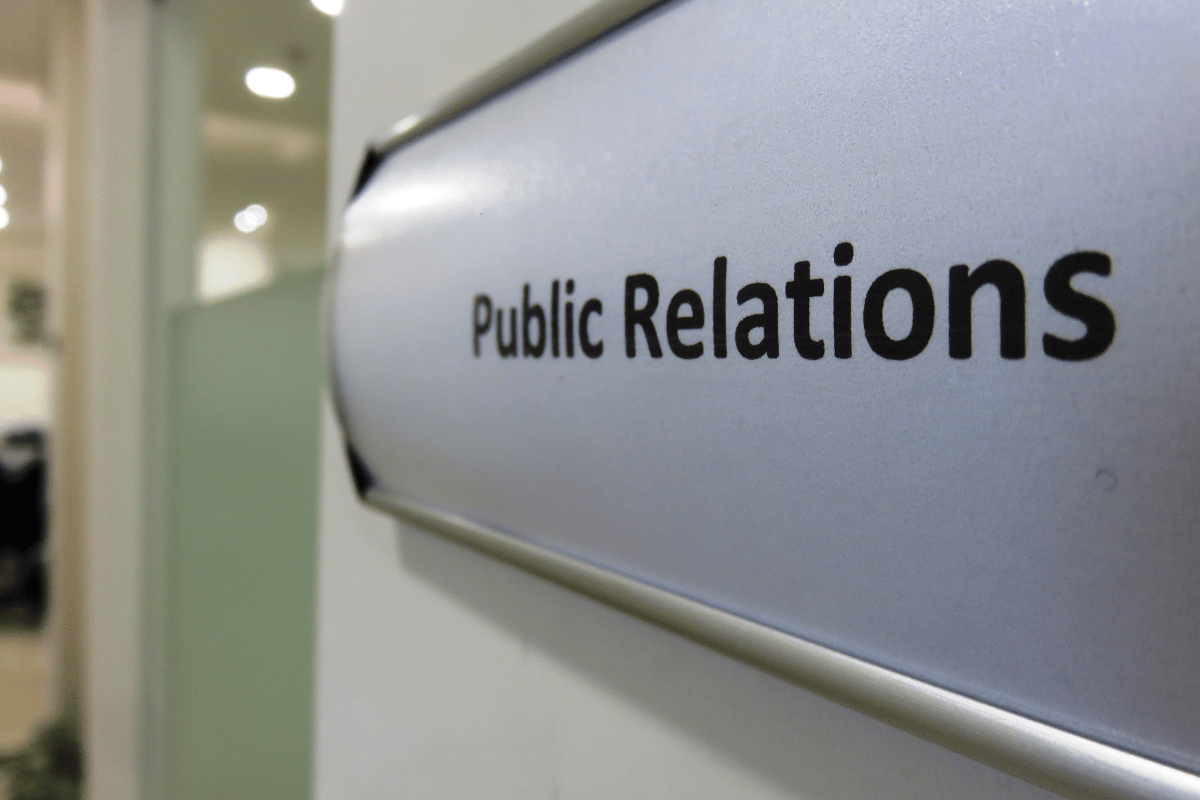Marketing Public Relations: Managing Public Perception
Picture this: you’re a master of perception, molding public opinion with every word and action. In the world of marketing public relations, your role is crucial in shaping how the public sees a brand.
With strategic messaging and savvy social media tactics, you have the power to craft compelling narratives that influence minds.
But it doesn’t stop there. In times of crisis, you’re the calm in the storm, managing public perception with finesse.
Join us as we delve into the art of managing public perception through marketing PR.
Key Takeaways
- Marketing PR plays a crucial role in shaping public opinion and influencing how crises are perceived.
- Upholding ethical standards in Marketing PR builds long-term relationships with the public.
- Influencer partnerships are powerful in marketing PR and help increase brand awareness and sales.
- Leveraging social media platforms effectively can shape public perception and drive engagement.
The Role of Marketing PR in Shaping Public Opinion
You’ll learn how Marketing PR plays a crucial role in shaping public opinion. When it comes to crisis management, the role of Marketing PR becomes even more significant. In times of crisis, companies and organizations rely on Marketing PR to effectively communicate their messages to the public, manage public perception, and maintain trust and credibility.
One of the primary functions of Marketing PR in crisis management is to control the narrative surrounding the crisis. By strategically crafting and disseminating messages, Marketing PR professionals can shape public opinion and influence how the crisis is perceived. They’ve the power to highlight positive aspects, address concerns, and provide timely updates, all of which can help mitigate the impact of the crisis and regain public trust.
For effective crisis management and maintaining a positive brand image, partnering with a PR Agency Toronto or a place near you can provide invaluable support. Their expertise ensures your messaging is clear, consistent, and resonates with your target audience, helping to navigate challenging situations successfully.
However, it’s important to note that ethical considerations play a vital role in Marketing PR. While managing public opinion, Marketing PR professionals must ensure that they’re being transparent, honest, and responsible in their communication efforts. They must prioritize the truth and avoid any misleading or manipulative tactics. Upholding ethical standards not only helps maintain credibility but also builds long-term relationships with the public.
Building a Strong Brand Image Through Marketing PR
You want your brand to stand out from the competition and leave a lasting impression on consumers. That’s where marketing PR comes in.
PR Strategies for Branding
Sometimes, it’s important to utilize PR strategies to build a strong brand image through marketing PR. In today’s competitive market, it’s crucial to stand out and create a memorable brand that resonates with your target audience. Here are four powerful PR strategies that can help you achieve this:
- Storytelling: Craft compelling narratives that captivate your audience and create an emotional connection with your brand.
- Influencer partnerships: Collaborate with industry influencers and thought leaders to enhance your brand’s credibility and reach a wider audience.
- Social media engagement: Leverage the power of social media platforms to engage with your audience, build relationships, and strengthen your brand’s presence.
- Thought leadership: Position yourself as an expert in your industry by sharing valuable insights and knowledge, which helps build trust and credibility.
Influencer Partnerships for PR
To build a strong brand image through marketing PR, consider partnering with influencers in your industry.
Influencer collaborations have become a powerful tool in the world of marketing, allowing brands to reach a wider audience and establish credibility. Leveraging trusted PR distribution platforms like Pressat can amplify these efforts, helping you share influencer-driven content with media outlets and boost your campaign’s visibility. By teaming up with influencers who have a strong following and influence in your target market, you can connect with potential customers in a more authentic way.
Influencer marketing strategies have proven to be highly effective in building brand awareness, increasing engagement, and driving sales. When selecting influencers to partner with, it’s important to consider their values, audience demographics, and content quality. By collaborating with influencers who align with your brand values and target audience, you can create a strong brand image and establish trust with your customers.
Strategies for Influencing Public Perception
One effective strategy for shaping public perception is through brand storytelling. By crafting compelling narratives that resonate with your target audience, you can influence consumer behavior and enhance your reputation management.
Here are four key tactics to consider:
- Emotionally engage your audience: Tap into their desires, fears, and aspirations. Create stories that evoke strong emotions, such as joy, excitement, or even nostalgia. By connecting on an emotional level, you can leave a lasting impression and shape their perception of your brand.
- Use relatable characters: Develop characters that your audience can identify with. Whether it’s a relatable protagonist overcoming obstacles or a customer sharing their success story, make sure your characters reflect your target audience’s values and experiences. This will help them see themselves in your brand narrative.
- Create a sense of authenticity: Be genuine and transparent in your storytelling. People appreciate honesty and are more likely to trust a brand that presents itself authentically. Share real experiences, highlight your brand’s values, and showcase the people behind your products or services.
- Incorporate visuals: Visual content is powerful in capturing attention and conveying messages. Use compelling imagery, videos, or infographics to enhance your brand storytelling. Visuals can evoke emotions, create memorable experiences, and make your brand narrative more engaging.
Leveraging Social Media for Effective Marketing PR
To effectively leverage social media for your marketing PR efforts, you need to understand the power of platforms like Facebook, Twitter, and Instagram. In today’s digital age, social media plays a crucial role in shaping public perception and influencing consumer behavior. By harnessing the potential of these platforms, you can create a strong online presence, engage with your target audience, and drive brand awareness.
One key aspect of leveraging social media for effective marketing PR is utilizing social media analytics. These tools allow you to measure and analyze the performance of your social media campaigns, providing valuable insights into your audience’s preferences, interests, and behavior. By understanding these metrics, you can tailor your content and strategies to better resonate with your audience, increasing engagement and driving conversions.
Content creation is another vital element in leveraging social media for marketing PR. Your content should be compelling, relevant, and shareable, capturing the attention of your audience and encouraging them to interact with your brand. Whether it’s in the form of videos, images, or written posts, your content should align with your brand’s values and objectives, while also appealing to your target audience.

Crafting Compelling Messages to Shape Public Opinion
When crafting compelling messages to shape public opinion, you should consider the emotions and values of your target audience. To effectively shape public sentiment, it’s crucial to craft persuasive narratives that resonate with your audience.
Here are four key elements to consider when crafting your messages:
- Emphasize the value proposition: Highlight how your product or service can improve the lives of your audience. Appeal to their desires and aspirations, showing them the positive impact it can have on their daily lives.
- Tell engaging stories: Weave narratives that captivate your audience and evoke emotions. Use storytelling techniques to create relatable characters, compelling conflicts, and inspiring resolutions. This will make your message more memorable and impactful.
- Address pain points: Identify the challenges and pain points your audience faces. Show them that you understand their struggles and offer solutions that can alleviate their problems. This will create a sense of empathy and trust.
- Use social proof: Incorporate testimonials, case studies, and success stories to demonstrate the positive experiences others have had with your product or service. This social proof will build credibility and increase the likelihood of your audience adopting your perspective.
Managing Public Perception in Times of Crisis
During a crisis, you must proactively address any negative perceptions that could harm your brand’s reputation. Crisis communication plays a crucial role in managing public perception during challenging times. It’s essential to have a well-defined strategy in place to effectively communicate with your audience and maintain trust. Reputation management becomes even more critical as public scrutiny intensifies.
When faced with a crisis, transparency is key. It’s essential to be open and honest with your stakeholders, providing regular updates to keep them informed. Address any concerns or misconceptions promptly and clearly. By doing so, you can demonstrate your commitment to resolving the issue and rebuild trust.
Additionally, proactive engagement is vital in managing public perception during a crisis. Utilize social media platforms and other communication channels to actively engage with your audience. Respond to their inquiries, acknowledge their concerns, and provide accurate information to alleviate any fears or doubts.
Measuring the Success of Marketing PR Efforts
Are your marketing PR efforts producing the desired results?
It’s time to measure the success of your efforts using key performance indicators, analyzing media coverage, and tracking social media engagement.
By identifying the metrics that matter most to your organization, you can gain valuable insights into the effectiveness of your marketing PR strategies and make data-driven decisions to optimize future campaigns.
Don’t rely on guesswork; let the numbers guide your path to success.
Key Performance Indicators
To effectively measure the success of your marketing PR efforts, identifying key performance indicators is essential. These indicators serve as benchmarks that help you gauge the effectiveness of your strategies and monitor the results of your campaigns.
Here are four key performance indicators that can empower your marketing PR efforts and drive success:
- Brand Awareness: Measure the level of recognition and familiarity your target audience has with your brand. This can be done through surveys, social media engagement, and website traffic.
- Media Mentions: Keep track of how often your brand is mentioned in the media. This includes traditional media outlets, as well as online publications and social media platforms.
- Website Traffic: Monitor the number of visitors to your website and track their behavior. This can help you understand how effective your PR efforts are in driving traffic and engagement.
- Customer Engagement: Measure the level of interaction and engagement your customers have with your brand. This can include social media likes, shares, comments, and customer reviews.
Analyzing Media Coverage
Track the number of media mentions your brand receives to measure the success of your marketing PR efforts.
Analyzing media coverage is crucial in understanding the impact of your PR campaigns and shaping public perception. Media analysis allows you to gauge the reach and effectiveness of your messaging, identify trends, and uncover valuable insights.
By monitoring media mentions, you can assess the quantity and quality of coverage, as well as sentiment towards your brand. This data forms the foundation for developing PR metrics that align with your goals. Are you aiming for increased brand awareness or improved reputation?
Analyzing media coverage enables you to evaluate the success of your strategies and make informed decisions for future campaigns. Stay ahead of the competition by harnessing the power of media analysis to optimize your marketing PR efforts.
Tracking Social Media Engagement
When tracking social media engagement, you can use various metrics to measure the success of your marketing PR efforts. By utilizing social media analytics and monitoring tools, you can gain valuable insights into the effectiveness of your campaigns.
Here are four key metrics to consider:
- Reach: Measure the number of people who’ve seen your content. A higher reach indicates wider brand exposure.
- Engagement: Look at the number of likes, comments, and shares your posts receive. Higher engagement suggests a more active and interested audience.
- Click-through Rate (CTR): Track the percentage of users who click on links in your posts. A higher CTR reflects compelling and persuasive content.
- Sentiment Analysis: Analyze the overall sentiment towards your brand. Positive sentiment indicates a successful PR campaign.
Conclusion
As you wrap up your marketing PR efforts, remember that the power to shape public perception lies in your hands.
With strategic messaging, effective use of social media, and a strong brand image, you hold the key to influencing how your audience sees your organization.
But the journey doesn’t end here; it’s just the beginning.
So, embrace the thrill of the unknown, and watch as your carefully crafted messages captivate and sway the minds of the public.
The suspense is building, and the future is yours to shape.





